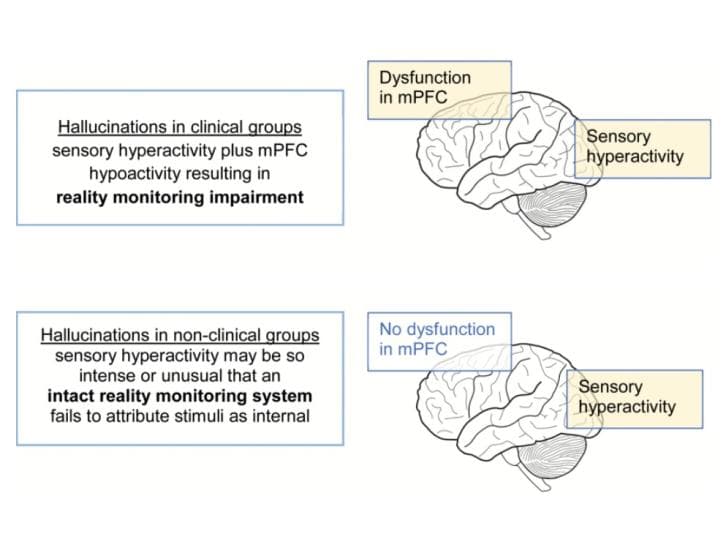
A preliminary taxonomy of the voices inside your head
Despite the shortcomings and need for more research, this is a novel approach to the study of our inner conversations.
19 May 2015
Psychologists are taking an increasing interest in the way we all speak to ourselves in our heads. Unpleasant, uncontrollable inner voices can be a feature of mental illness, but private self-talk is a mundane part of most healthy people's consciousness.
When we talk to ourselves in our heads in this way, it's common for there to be a kind of dialogue. Consider how "You" might say to yourself that you want to stop working, but then a voice in your head takes a different stance and urges you to continue.
For a new study, Malgorzata Puchalska-Wasyl at the University of Lublin in Poland has attempted to create a preliminary taxonomy of the different kinds of "internal interlocutors" that people experience.
Ninety-eight participants (mostly students; average age 23; half were women) were asked to think of the inner voice or interlocutor they most often have a dialogue with in their own minds. Next they scored from 1 to 4 how much each of 24 emotional words in four categories (self-enhancement; contact and union with others; positive emotion; negative emotion) applied to this inner voice, including: joy, shame, strength, intimacy, anger, and inner calm.
Puchalska-Wasyl crunched the numbers (using a technique called k-means clustering) and found that the participants' descriptions of their inner voices clustered into four distinct categories. Thirty of them fell into the category of "Faithful Friend" and were associated with strength and unity and positive emotion; 22 fitted the category of "Ambivalent Parent" and were associated with strength and love, but also ambivalence or negativity to the participant's irresponsible ideas; 32 matched the "Proud Rival" category, showing pride and self-confidence combined with a lack of closeness to the participant; and finally the remainder fitted the description of "Calm Optimist" – a relaxed interlocutor, characterised by low self-enhancement, little emphasis on contact with others, but in a way that participants perceived positively.
A limitation of this first investigation is that participants only listed the inner voices they spoke with most often. For a follow-up then, Puchalska-Wasyl asked 114 more participants (again, most were students) to rate the character of four inner interlocutors: the two they experienced most often, and two others that differed in the emotions they showed toward the participant.
After analysing the ratings, Puchalska-Wasyl again found the Faithful Friend, Ambivalent Parent and Proud Rival categories of inner voice, but this time no Calm Optimist. In its place was a different category "Helpless Child", characterised by a low emphasis on self-enhancement, low scores on contact with others, and high negative emotion.
The study mostly relied on Polish students so it's not clear how well the findings will generalise. There might be types of voice that the students preferred not to share, and people in other cultures or different stages of life might describe different voices. Also, there is an element of subjectivity in the way that the researcher chose to characterise the inner voices. Moreover, we need more research on the functions of the different voices. Puchalska-Wasyl says it's currently possible to distinguish "integrative" (solution-seeking) and "confrontational" dialogues, with Faithful Friend and Ambivalent Parent likely fitting the former description and Proud Rival and Helpless Child, the latter.
Despite the shortcomings and need for more research, this is a novel approach to the study of our inner conversations, and Puchalska-Wasyl points out that "given that internal dialogues are a useful instrument in psychotherapy, a universal typology of internal interlocutors and the knowledge of functions fulfilled by these universal types in different contexts can be of practical significance: it could contribute to more effective use of those dialogs in psychological practice."
Further reading
Puchalska-Wasyl, M. (2014). Self-Talk: Conversation With Oneself? On the Types of Internal Interlocutors The Journal of Psychology, 149 (5), 443-460 DOI: 10.1080/00223980.2014.896772

